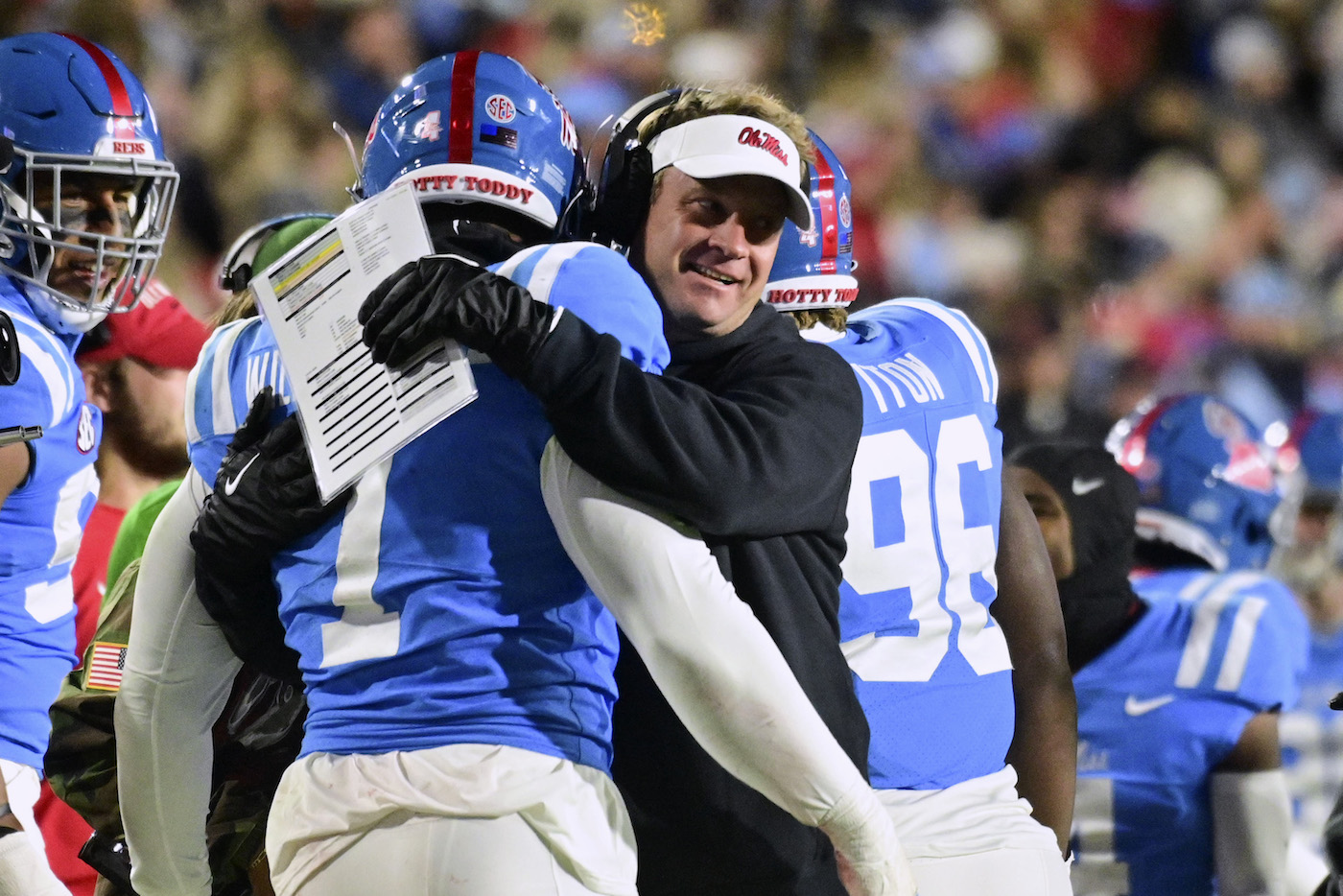
Hayes: If Lane Kiffin leaves, Ole Miss has nobody to blame but itself
By Matt Hayes
Published:
They’ve had time to figure this out, to corral NIL cash and stabilize a growing program.
They’ve known this day was coming for weeks, with every subtle hint dropped by the coach they desperately want to keep.
And now Ole Miss is scrambling to keep Lane Kiffin.
“These jobs have become a battle of war chests,” an SEC coach told me this week. “Who has the most NIL money to feed the goat.”
What exactly is your level of commitment, Ole Miss? If 1 coach leaves because of a lack of it, the next will, too — if it doesn’t change.
Want to know why Kiffin would even consider taking the Auburn job, or any other blue-blood SEC job? Commitment.
The Auburn commitment may be half-cocked, may come with stipulations from meddling deep-pocket boosters reliving Pop Warner glory years. But it’s real — and so is the war chest.
The question really isn’t why Kiffin is or isn’t considering leaving Ole Miss. It’s why wouldn’t he?
When he runs out of the tunnel from halftime, and he and his team return to a half-empty stadium, what exactly is he supposed to think of the commitment?
When, after leading last year’s team to a record-tying 10 wins, both of his coordinators leave for more money at blue-blood programs. OC Jeff Lebby was going home to Oklahoma, and that made his move easier.
But DC DJ Durkin bolted for straight cash, something Kiffin made clear with — what else? — a tweet. But he’s not wrong, and he keeps leaving these crumbs as a trail to the one thing Ole Miss hasn’t considered up to this point.
Forget about the money you’re throwing at Kiffin. The $7 million a year is nice, but will only keep him happy for so long.
At the end of the day, he’s a football coach. He wants to win games. He needs players.
To get better players, he needs more NIL cash — for high school and transfer portal recruiting.
If you don’t like it, get out of the game and settle for 5-7 and 6-6. And maybe, when the stars align — or worse, when the program goes gangster — 10 wins is attainable.
Ole Miss has won 10 games 3 times in the modern era. With an elite, 5-star QB in 2003 (Eli Manning), and by breaking NCAA rules and buying players (before if was hip to do so with NIL) in 2013.
Then there’s 2021 with Kiffin, who took a petulant former 4-star QB recruit (Matt Corral) and turned him into an Ole Miss legend — and had a chance to win a school-record 11 games before Corral was injured in the Sugar Bowl.
Imagine what he could do with a full war chest of NIL money.
As soon as Auburn fired Bryan Harsin earlier this month, Ole Miss president Glenn Boyce and athletic director Keith Carter should have made keeping Kiffin priority 1. Universities can’t fund NILs, but they can certainly publicly make it clear that NIL is the way of the future — and Ole Miss can’t be left behind, slowly and painfully lost in a sea of 5-7.
Earlier this month, Tennessee athletic director Danny White capitalized on the biggest moment of Vols football in more than 2 decades by releasing a video message with clear intentions: If you want wins like this, pony up to Tennessee NILs.
It may not feel good. It may not be how you were raised to think and feel about competition, and outworking the other guy, and doing your very best and hoping it’s enough.
It’s never going to be enough if the other guy is playing with a straight flush, and you’re sitting there with a pair of 3s.
Maybe Ole Miss gets lucky if/when Kiffin leaves. Maybe the Rebels hire a young, offensive-minded, hard-charging, player-friendly coach (see: Charlie Weis Jr.), and he’ll pick up where Kiffin left off and win games. Maybe even 10.
And then he’ll leave for the next blue-blood with a bigger war chest.
This problem isn’t going away for Ole Miss, or any other Power 5 program that refuses to embrace the future. It wasn’t that long ago that new Florida coach Billy Napier proclaimed his program would use NIL money “the way it was intended” — as a reward for current players who have earned it.
That changed in a matter of months, when he struck out in the portal (other than his Louisiana players following him to Gainesville), and lost a few key recruits in his first recruiting class (see: Harold Perkins) to those schools who had warmed to all things NIL.
Until Ole Miss gets serious about competing in the NIL world, the program will look a lot like Vaught-Hemingway Stadium looked earlier this season at halftime of the Tulsa game: half-full.
At that time — more than a month before Auburn confirmed the worst secret in college football and fired Harsin — Kiffin said he was tired of saying the same thing about the Ole Miss crowd.
“I’ve tried social media for 2 years,” Kiffin said in September. “I’ll worry about what I can control.”
If you didn’t see it then, Ole Miss, it’s staring you in the face now. The one thing Kiffin can control is where he works.
Thursday night’s Egg Bowl could be Kiffin’s last game at Ole Miss.
At the very least, make sure the halftime crowd hasn’t slipped back to the Grove for a few toddys.
If it’s not too much of a commitment.
Matt Hayes is a national college football writer for Saturday Down South. You can hear him daily from 12-3 p.m. on 1010XL in Jacksonville. Follow on Twitter @MattHayesCFB







